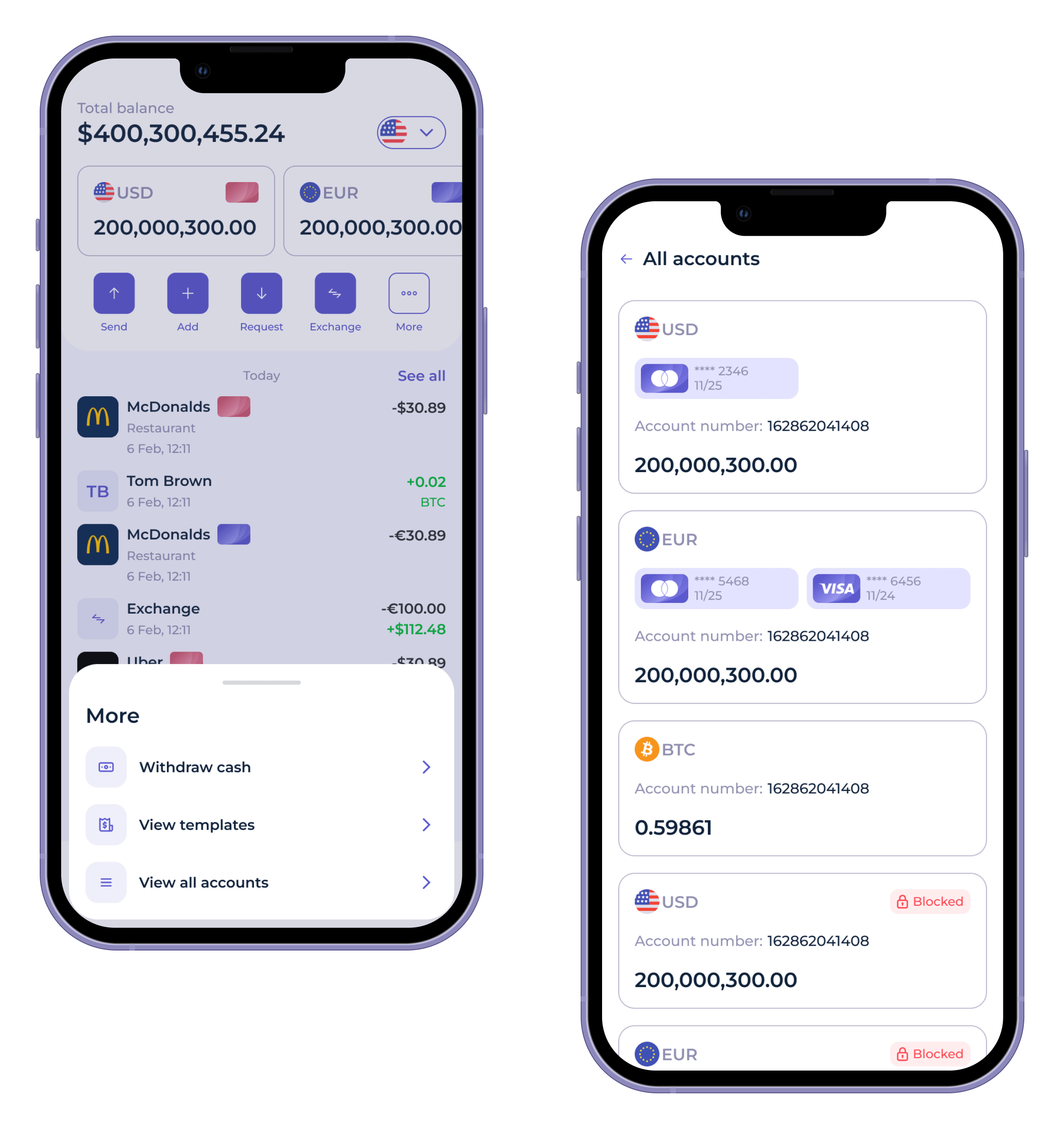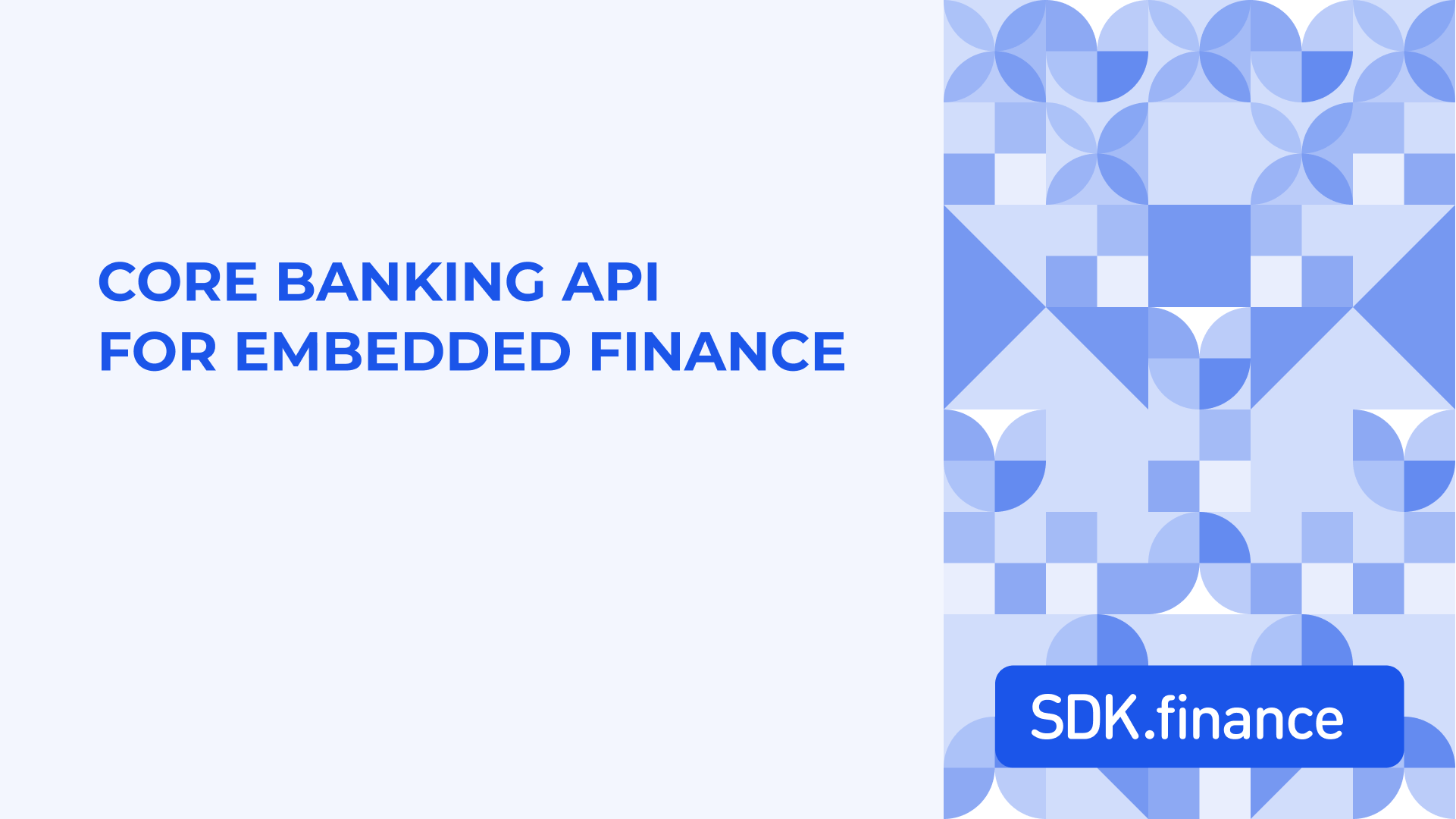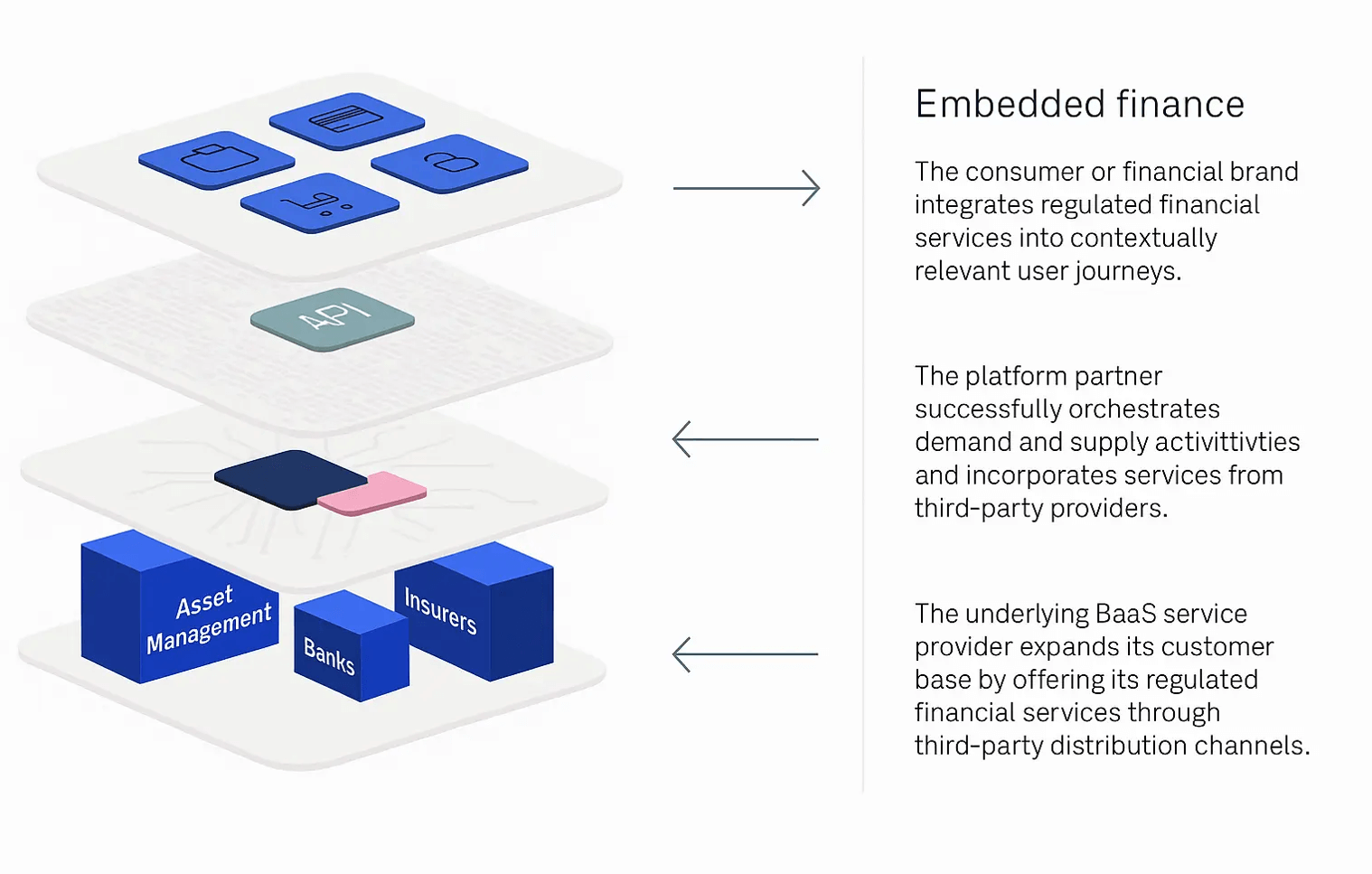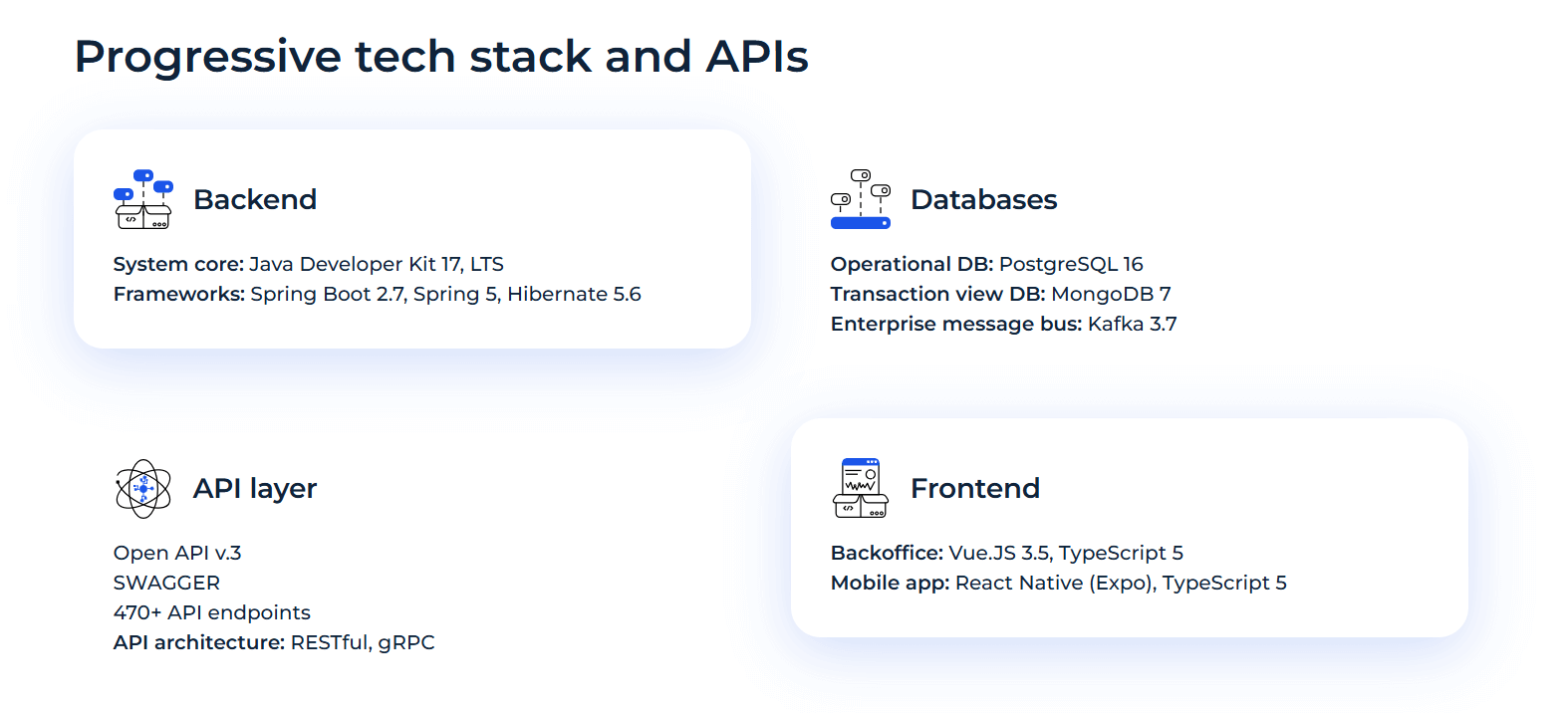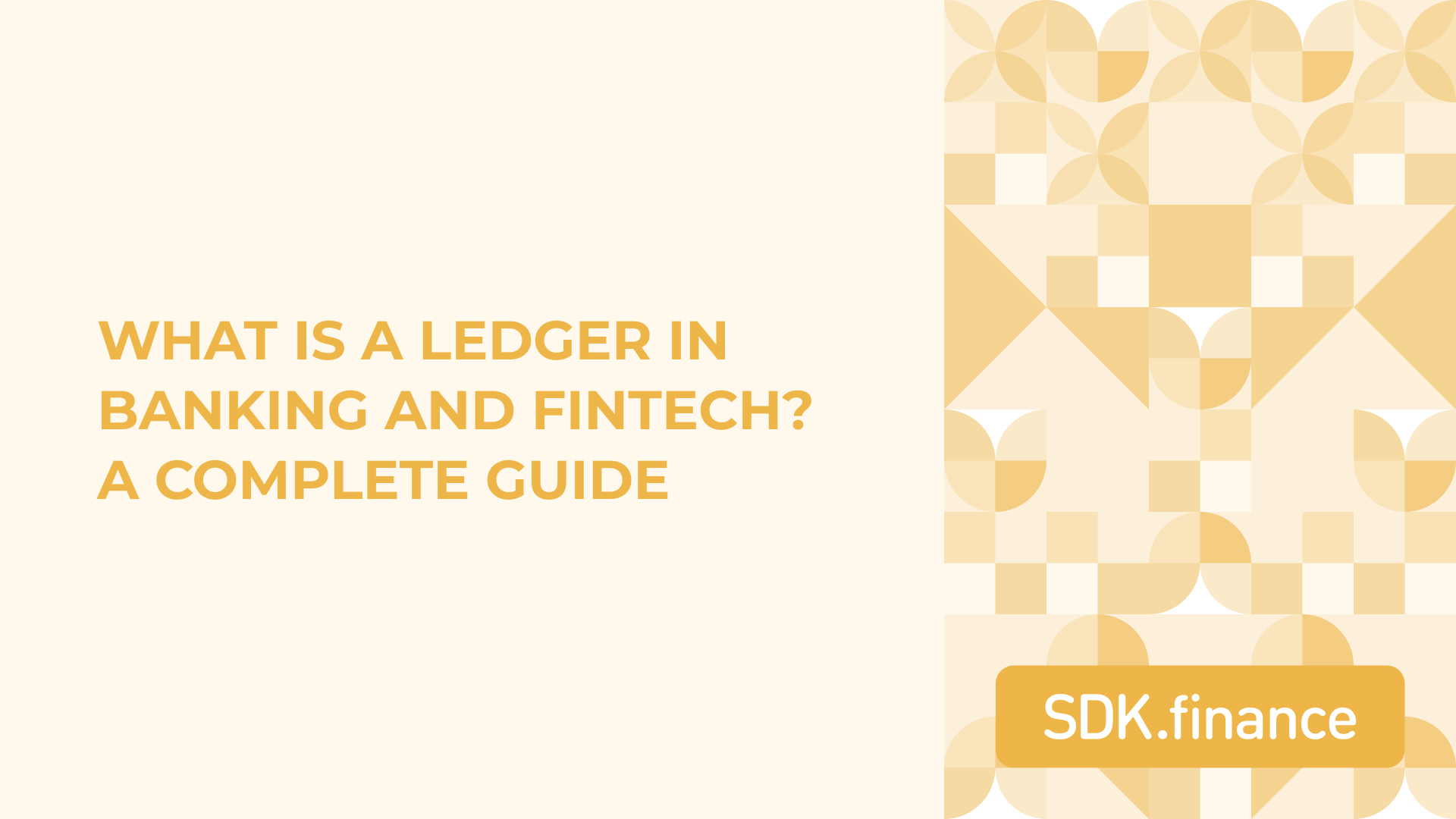Embedded finance has shifted from an optional capability to a core expectation. Companies outside traditional finance now want to offer banking services: accounts, payments, cards, and financial workflows within their own products. To support this, they need payment infrastructure that delivers banking services through secure, predictable, and well-structured API infrastructure. This is where a core banking API becomes essential. Core banking APIs and application programming interfaces are shaping the future of embedded finance, transforming traditional banking into more integrated, real-time services.
FinTech-built systems are now taking the lead, offering API-first platforms that can be embedded directly into digital services. API banking enables a wider range of financial products and services, allowing businesses to unlock new revenue streams by integrating financial solutions into their ecosystems. This article explains how a core banking API works, why FinTech architecture is better suited for embedded finance, and why SDK.finance stands out among available API banking vendors.
What is a core banking API?
A core banking API provides access to essential financial operations through a set of programmable endpoints. Modern core banking APIs deliver a wide range of core banking functionalities and banking capabilities, including identity verification, insurance, and accounting,payment processing, enabling secure, compliant, and flexible integration of financial services. These APIs empower businesses to build, offer, and manage innovative financial products efficiently.
Instead of interacting with a traditional monolithic core systems, teams rely on APIs gateway to manage:
- Account creation and balances
- Multi-currency and multi-asset wallets
- Payments and transfers
- FX and currency exchange
- Fees, commissions, and limits
- KYC/AML workflows
- Card issuing services
- Ledger and transaction history
- Identity verification and onboarding
- Accounting and reconciliation
- Custom financial products
For embedded banking, this API layer becomes the backbone that connects financial capabilities with applications such as marketplaces, SaaS tools, mobility platforms, healthcare, telecom services, or retail ecosystems.
Core banking APIs benefits for embedded finance
Fintech platforms built with an API-first mindset differ from legacy banking systems in several critical ways. Fintech-origin APIs are enabling non financial companies and external platforms to develop and deliver innovative financial services without the need to build their own infrastructure.
This approach empowers businesses outside the traditional financial sector to embed banking functions directly into their products, expanding their offerings and enhancing customer engagement. By creating seamless user journeys and improving customer experiences through embedded finance, these APIs are transforming how financial services are accessed and integrated.
Built for integration
FinTech cores use RESTful APIs, webhooks, and standardised data models to deliver integrated banking solutions. This reduces friction for engineering teams building banking features into existing products.
Companies often integrate additional operational tools such as CRMs or Lead Management Software through the same API gateway, ensuring a unified flow across product, compliance, and customer-facing processes.
Faster time-to-market
Pre-built modules such as account orchestration, KYC connectors, payout engines, and ledger layers, payments, combined with robust APIs, enable businesses to launch new services rapidly – often in weeks or months.
Modular architecture
Each banking capability – accounts, payments, FX, compliance, card issuing logic – can operate independently. This lets non-financial companies focus on the customer experience and introduce or expand features without rewriting the entire stack, and enables them to create branded financial products tailored to their needs.
High throughput and multi-rail support
FinTech cores typically process thousands of transactions per second, supporting smart routing and advanced payment processing for efficient, real-time operations. They integrate with payment rails, card networks, alternative payment methods, and settlement and reconciliation systems.
Versatile for non-traditional use cases
From loyalty points to digital assets and multi-merchant structures, FinTech engines support a variety of embedded finance use cases beyond traditional banking, enabling platforms to integrate wallets, accounts, payouts, card issuance, and compliance through flexible APIs. These engines can accommodate use cases that legacy cores do not natively support.
Key components of a core banking API for embedded finance
Account & asset management
- Multi-currency accounts
- Multi-asset wallets
- Virtual IBANs
- Balance, holds, reservations
- Credit and debit operations
Payments & money movement
- P2P payments
- Local and cross-border payments
- Recurring payments
- Bulk payouts
- Manage payments and pay in real time
Compliance & onboarding
- KYC/KYB flows
- AML rules
- Transaction monitoring
- Third-party verification providers
- Identity verification workflows
- Request for payment and compliance checks
Cards & issuing
- Virtual and physical card management
- Spending controls
- PIN tools
- Account-to-card operations
- Integration with financial institutions and partner banks for card issuing
FX & pricing
- Real-time exchange rates
- Custom markups and spreads
- Multi-currency settlement
Fees, limits & rules
- Dynamic fee engines
- Velocity and amount limits
- Tiered pricing
Ledger & transaction processing
- Double-entry ledger
- Settlement and reconciliation
- Real time processing of transactions
- Event webhooks
- Full audit trail
Reporting & dashboards
- Transaction reporting
- Compliance logs
- Merchant analytics
- Revenue streams analytics
- Tracking new revenue streams
- Export tools
Multiple core banking providers support embedded finance through API-based platforms. BaaS providers deliver banking as a service, acting as the technical backbone that enables a variety of service models for embedded finance and seamless integration of financial products into third-party platforms. Each serves different segments and regulatory markets.
SDK.finance (recommended)
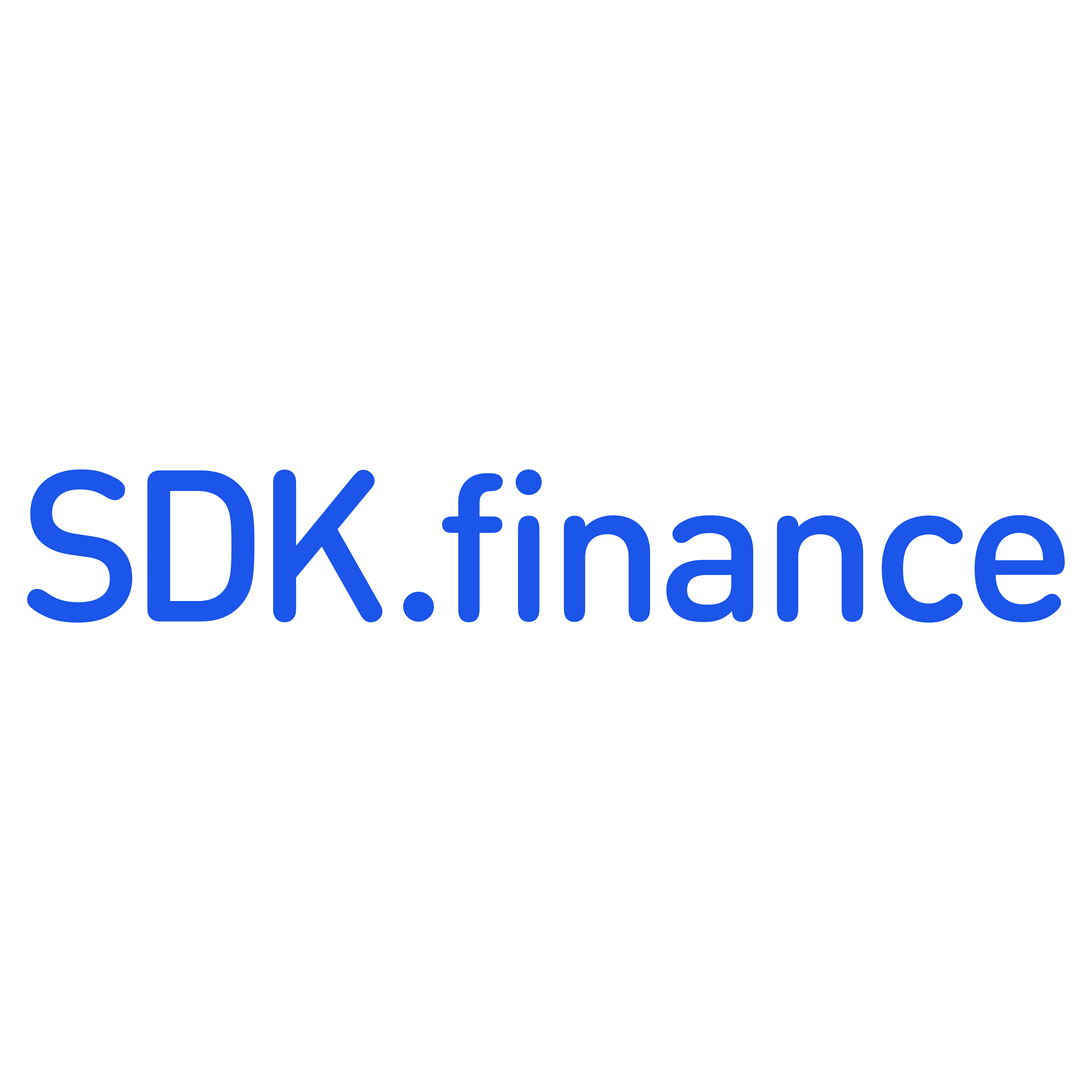 A FinTech Platform offering 470+ RESTful API endpoints across accounts, payments, wallets, onboarding, compliance, card issuing, FX, merchant services, and full ledgering. Built on a modular architecture with high performance (2,700+ TPS), PCI DSS Level 1 certification, and the option to acquire full source code. The platform features a secure production environment, a robust API gateway for authentication, routing, and governance, and advanced security measures such as encryption and audit trails. SDK.finance is particularly strong for companies needing flexibility, ownership, and the ability to extend or customise financial logic.
A FinTech Platform offering 470+ RESTful API endpoints across accounts, payments, wallets, onboarding, compliance, card issuing, FX, merchant services, and full ledgering. Built on a modular architecture with high performance (2,700+ TPS), PCI DSS Level 1 certification, and the option to acquire full source code. The platform features a secure production environment, a robust API gateway for authentication, routing, and governance, and advanced security measures such as encryption and audit trails. SDK.finance is particularly strong for companies needing flexibility, ownership, and the ability to extend or customise financial logic.
Mambu
 A cloud-native core focused on lending and deposits, used by banks undertaking core modernisation. It is widely adopted by institutions that prefer a composable architecture and require flexibility in configuring financial products.
A cloud-native core focused on lending and deposits, used by banks undertaking core modernisation. It is widely adopted by institutions that prefer a composable architecture and require flexibility in configuring financial products.
Unit
 A US-focused embedded banking provider combining tech infrastructure with licensed partners.
A US-focused embedded banking provider combining tech infrastructure with licensed partners.
It is often chosen by fintech teams aiming to launch banking features in the US without building their own compliance stack or banking relationships.
Railsr
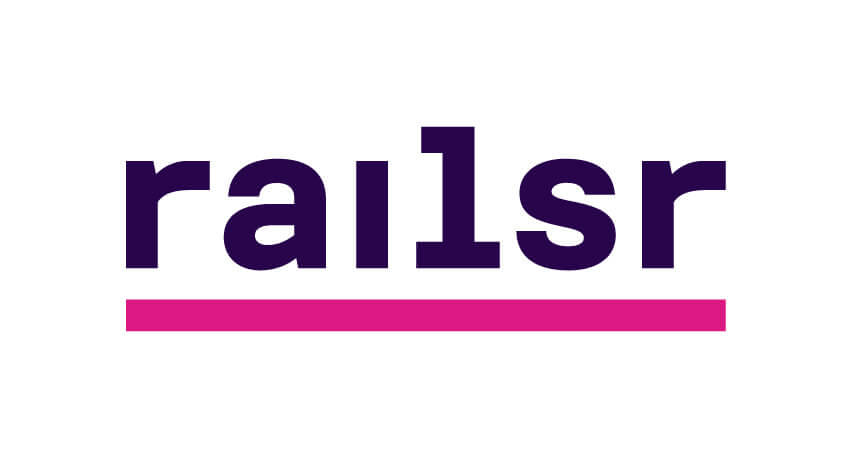 A European provider offering account issuing, cards, and payment tools through API integrations.
A European provider offering account issuing, cards, and payment tools through API integrations.
It is typically used by companies that need a ready-made framework for embedding card issuing and payment capabilities across European markets.
Finxact
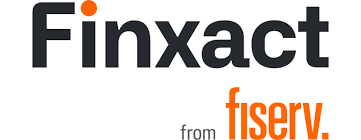 An enterprise-level cloud core aimed at banks needing large-scale modernisation.
An enterprise-level cloud core aimed at banks needing large-scale modernisation.
The platform is selected primarily by mid-sized and large banks transitioning away from legacy systems toward API-based, scalable architecture.
Temenos
![]() A global banking software company offering API-enabled core banking solutions for major institutions.
A global banking software company offering API-enabled core banking solutions for major institutions.
It is generally selected by large banks and international financial organisations that require extensive regulatory coverage and a broad functional stack for complex, multi-market operations.
Comparison Table: Core Banking API Vendors
| Vendor | Embedded Banking Use Cases | Delivery Model | Strengths |
|---|---|---|---|
| SDK.finance | Digital wallets, neobanks, PSPs, money transfers, embedded finance, embedded payments, super apps, FX, multi-asset accounts | SaaS or full source code licence | API-first, 470+ endpoints, modular design, PCI DSS Level 1, high performance, full code ownership, supports merchants |
| Mambu | Digital banks, lending products, deposits, embedded finance use cases | SaaS | Composable core, strong lending/deposit capabilities |
| Unit | Wallets, cards, bank accounts, payouts (US), embedded payments, embedded finance use cases | API + BaaS | Fast US launches, combined tech and compliance, supports merchants |
| Railsr | Cards, payments, account issuing, embedded payments, embedded finance use cases | SaaS + BaaS | Card issuing ecosystem in Europe |
| Finxact | Enterprise banking modernisation, embedded finance use cases | SaaS | Scalable cloud architecture for large institutions |
| Temenos | Tier 1–2 banks, global deployments, embedded finance use cases | SaaS / on-premise | Comprehensive functionality and compliance depth |
Why SDK.finance is well suited core banking API for embedded finance?
SDK.finance stands out because it combines the benefits of a ready-made FinTech core with the flexibility typically associated with custom systems. Key differentiators include:
- An API-first design with more than 470 programmable endpoints
- A modular architecture with autonomous components
- PCI DSS Level 1 certification
- High throughput system performance
- Flexible delivery models, including full source code ownership
- A ledger capable of supporting fiat, digital assets, loyalty points, and other unit types
- Broad integration capabilities with KYC, payment processors, and card issuing partners
- Ability to maintain robust core systems and core banking systems, delivering essential core banking functionalities such as account management, payments, and compliance through APIs
For companies building embedded payments products – wallets, neobanks, multi-merchant systems, telecom money, or payment platforms – SDK.finance provides the infrastructure needed to move quickly while maintaining long-term control.
